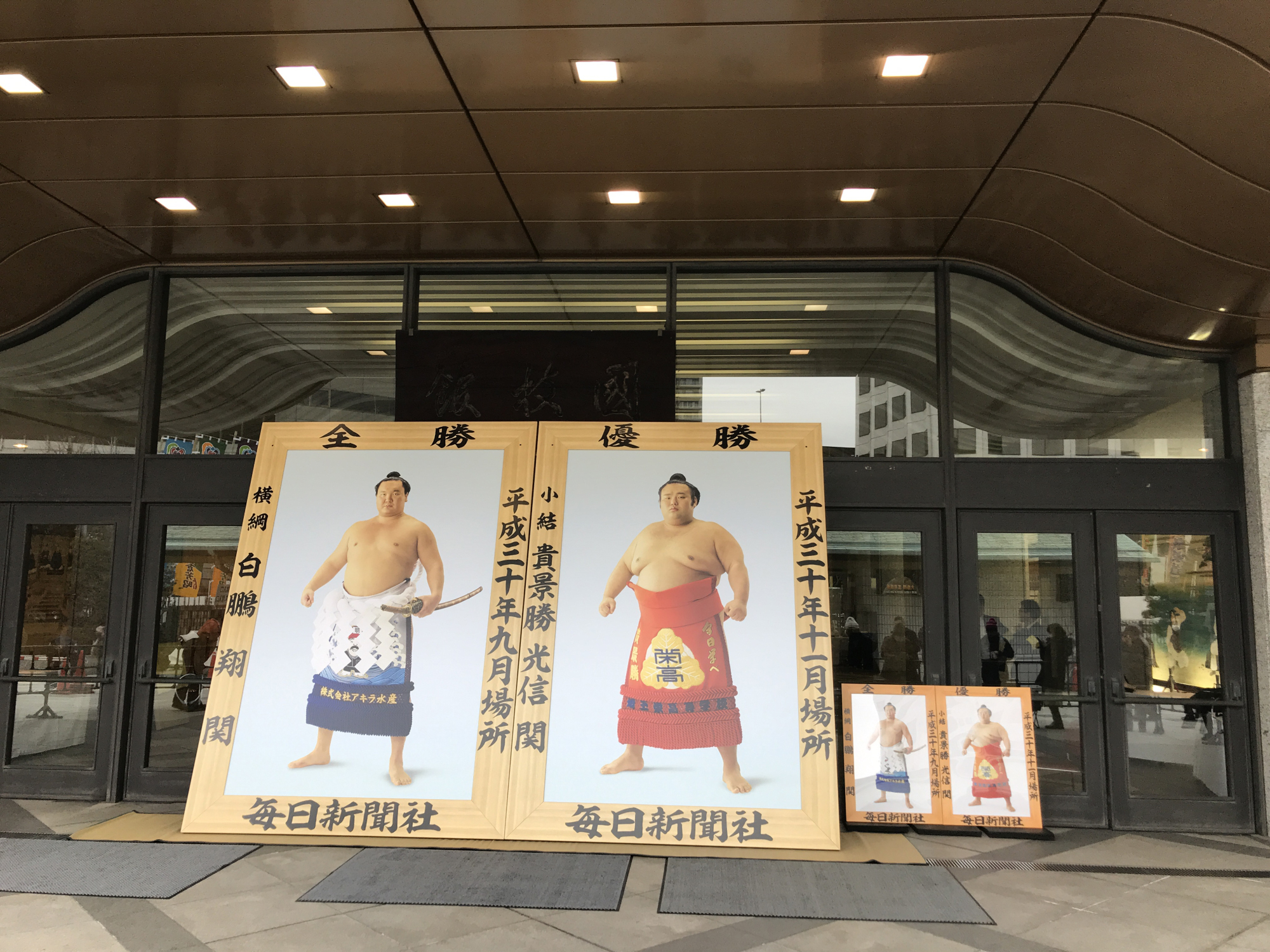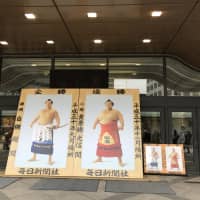One of the most striking features of Ryogoku Kokugikan is the ring of giant portraits hanging from the rafters.
The 32 images (each 3.17 x 2.22 meters including frame) show the winners for the past 32 tournaments.
Prior to each of the three annual Tokyo meets, the two oldest pictures are taken down and replaced with those of the two most recent winners.
The portraits, once removed, are given to the wrestler in question.
Some are then displayed in stables while others are given as gifts to schools, temples or other organizations.
Three portraits (Wakanohana II, Musashimaru and Mienoumi) hang in Ryogoku JR station.
Currently 10 men have pictures commemorating their championships in Ryogoku Kokugikan. Hakuho owns roughly half of them, while Takakeisho is the latest rikishi to be added.
For 62 years one woman, Suzue Sato, colored the portraits (which were made up of three vertical black and white photos combined) by hand using oil paint. After she retired in 2014, the Japan Sumo Association switched to digital color photos.
The portraits can be seen up close the day before each tournament starts. They are propped up against the main entrance doors to Ryogoku Kokugikan and once the ring purification ceremony has finished, the past two winners (or one — if the same man took both championships) pose in front of them and are presented with a miniature version.
The most common pose is the wrestler standing in his kesho mawashi. Yokozuna, especially those with multiple championships, vary things and may pose as if they were doing a ring entering ceremony.
Former ozeki Kotooshu's one and only championship portrait was unusual. In it he was standing, arms folded wearing only a regular mawashi.




















With your current subscription plan you can comment on stories. However, before writing your first comment, please create a display name in the Profile section of your subscriber account page.